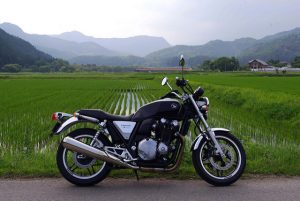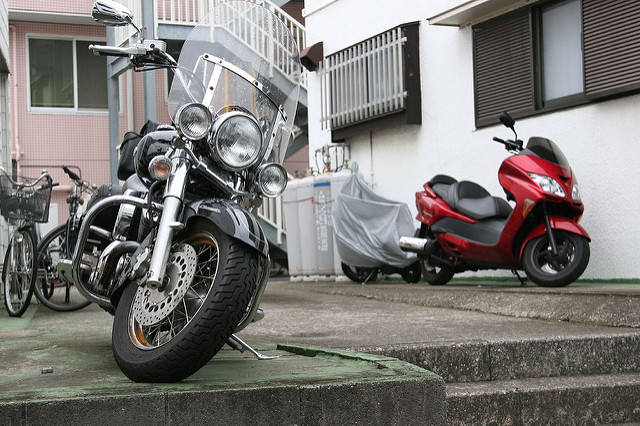Jan 27, 2021
How to Ride a Motorcycle Legally in Japan
If you’re living in one of the many urban areas in Japan, chances are you may choose to live car-free since we enjoy access to one of the best public transport systems in the world. Even then, though, there are times where you may wish to come and go as you please and not be tied to the strict timetables of the trains and buses. Or perhaps, like me, you may be looking for an easy way to get out of town and hit the beaches or mountains without being tied to a hard schedule. Unlike the headache of owning and maintaining a car in Tokyo, finding parking is usually way easier than for a car, and because they are common sights around “Everywhere Japan” (everything from pizzas to the mail is delivered on a motorbike), other drivers are looking out for two-wheel traffic more often than their foreign counterparts in other nations.
Are you experienced?

Of course, to operate a motorbike, you’ll need to be properly licensed. You’re able to ride in Japan on a motorcycle license from most countries if you also have an International Drivers License accompanying it; however, this is only valid for one year. If you plan on staying in Japan longer, you must obtain a Japanese license. If you already have a motorbike license from most of Europe, Canada, Australia, New Zealand, the states of Washington, California, and Hawaii in the USA, and many parts of Asia, you may have your license translated officially at any JAF office, then head to the Driver Testing Center in your part of Japan to take a short written exam (in your mother tongue of course), and pick up your new Japanese license. If you aren’t from any places where full reciprocity is in place, you will have to take a much shorter version of the standard Japanese road test besides following the same requirements as those getting passenger car licenses.
Size is everything
Motorbikes are grouped into three different classes:
- Small class (小型) – 0~125cc engine displacement.
- Not allowed to operate on expressways.
- Number plates issued by locality, township, or city.
- Ordinary class (中型) – 126~399cc engine displacement
- The most popular size in Japan is around 250cc.
- Biggest size cycles that are exempt from 2-year road inspections and road taxes
- Under 199cc registers cycle at the local municipal office; Over 200cc must register cycle at Land Transport Authority similar to passenger cars to get a number plate.
- Heavy Class (大型) – over 400cc engine displacement
- In addition to the Ordinary class requirements, these bikes must be inspected and subject to engine and road taxes every 2 years.
In addition to these, there is a Moped class (原付) for bikes and scooters with a 50cc engine or less:
- No separate license is needed if you hold a Japanese Driver’s License.
- Number plates issued by locality, township, or city.
- Restrictions on the type of roads they operate on. In general, there’s no expressway and other high speed rated roadway use.
Check our “Getting a Scooter License in Japan” article for more details.
For this article’s purposes, we’ll focus on the two classes, Ordinary and Heavy.
Doing the test yourself
If you find you must do the Japanese road test, it’s difficult, but not impossible.
- The test is written and practical in two parts (riding on the track). You’ll take the written test first (in English, no worries), and it should be easy if you’ve ridden before. After you pass, you’ll pick a date to come back and take the riding test. Also, make sure you note the class of bike you want to test on; unless we specify otherwise, American motorcycle licenses transfer as Ordinary class since we don’t have a US class system. If you want to ride a big bike, you’ll need the proper license!
- On the riding test day, you must bring your paperwork from previous visits, riding gloves, and your helmet. A bike and protective gear will be given.
- You must take the riding test in a very detailed manner as every movement you make as a rider is judged. For information on approaching the exam and some constructive tips, check out this write up on the Knowmadic News website.
Back to zoom school
Of course, if you don’t have a motorbike license from your home country, you can always get one here in Japan, but similar to a passenger car license, the examination is rigorous with a long written test and two-track riding exams that an infinitesimally small amount of people pass even on the third try. Even if you know a thing or two about riding on two wheels, it’s prudent to be like the natives and go to a driving…er— riding school. Many of the larger schools offer the course in English, and it has the added benefit of not having to take an actual road test after completion. But it can be pricy, usually ¥200,000 and up for most courses.
Motorcycle Purchase Advice
However you are licensed, you’ll next need something actually to ride, yeah? Of course, you could head to a dealership and purchase a new or used bike, but also check out motorcycle exclusive retailers like Red Baron and online with sites like Goo Bike, WeBike, or even Craig’s List to find a deal.
— By Jason L. Gatewood
Images: Ichikawa” (CC BY 2.0) by Usodesita
鹿沼市粟野町 kanuma awano” (CC BY-SA 2.0) by bluXgraphics


About the author